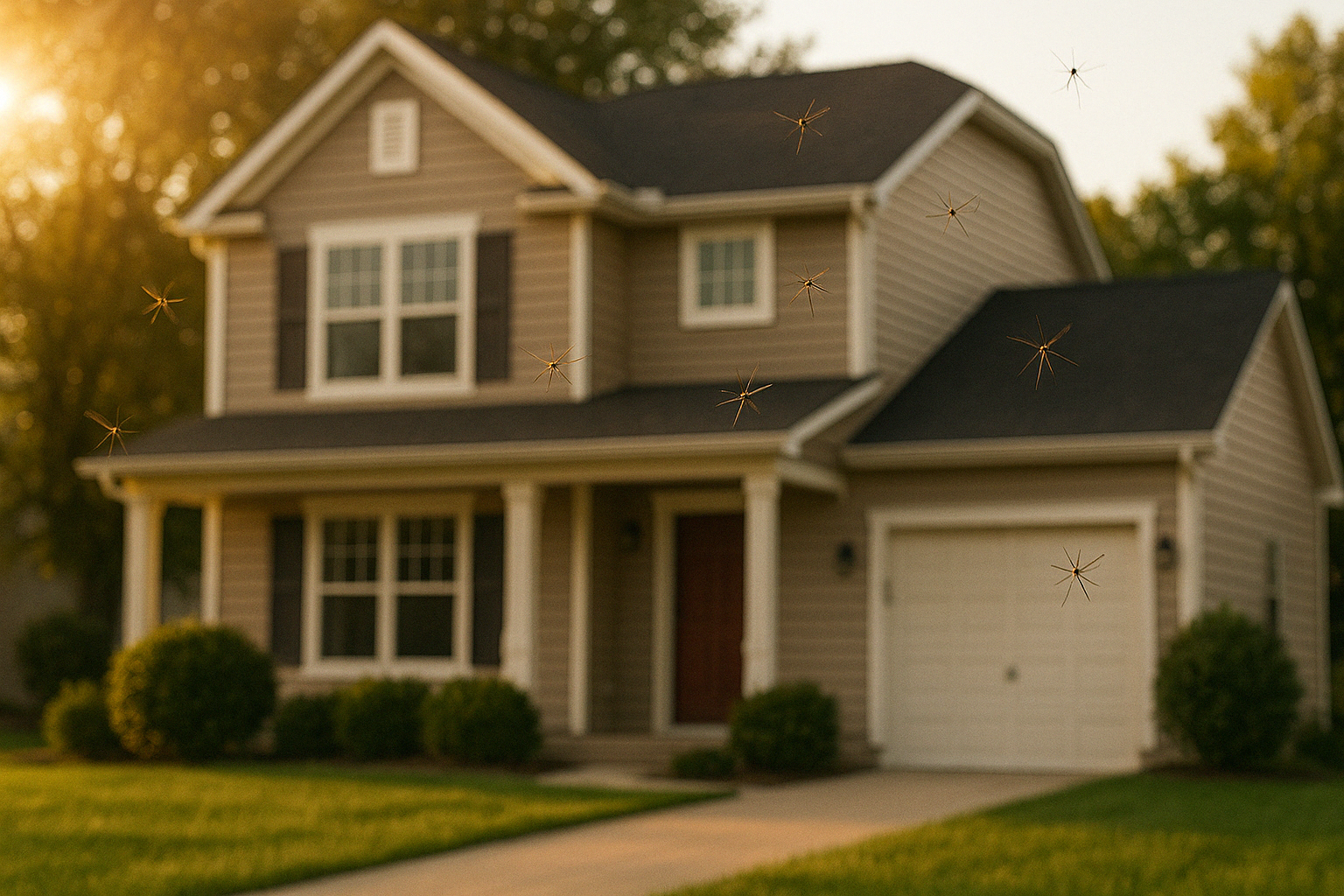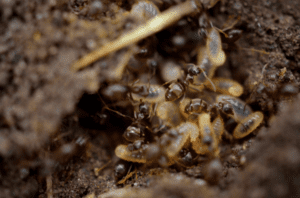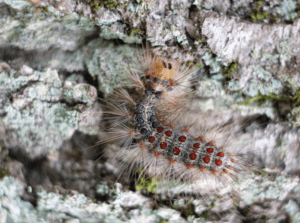
As temperatures rise and nature awakens, so do common household pests. Spring brings increased activity from ants, termites, mosquitoes, and other unwanted invaders, making early prevention essential. At Twin-Boro, we understand the importance of keeping your home or business pest-free. In this guide, we’ll share expert tips on sealing entry points, eliminating attractants, and when to seek professional pest control.
Why Do Pests Become More Active in Spring?
Pests become more active in the spring due to a combination of biological and environmental factors. As temperatures rise, many cold-blooded pests such as insects and rodents experience an increase in metabolic activity. Warmer weather speeds up their bodily functions, prompting them to search for food, water, and shelter after winter dormancy or hibernation. Additionally, increased humidity levels during spring create ideal conditions for pests like mosquitoes, ants, and termites, which thrive in moist environments that support their survival and reproduction.
Spring also coincides with the breeding cycles of many pest species. Longer daylight hours and warmer conditions act as natural signals, triggering mating behaviors and egg-laying. For example, mosquitoes lay their eggs in standing water, which becomes more abundant in spring due to rainfall and snowmelt. Similarly, ants and termites begin forming new colonies during this time, as the favorable conditions support the growth of their populations. Overall, the combination of rising temperatures, increased moisture, and biological breeding cycles aligns perfectly in the spring, leading to a noticeable surge in pest activity. This seasonal pattern is a natural survival strategy, allowing pests to exploit the abundance of resources and optimize their chances of reproduction and growth.
Common Springtime Pests to Watch Out For
Several common household pests emerge in spring, each posing specific problems for homes and gardens. Ants are among the first to appear, often invading homes in search of food. They can contaminate food supplies and, in the case of carpenter ants, cause structural damage by burrowing into wood. Termites also become active in spring, especially during their swarming season. They are notorious for silently destroying wooden structures, leading to costly repairs.
Mosquitoes thrive in the warmer, wetter conditions of spring. Aside from their irritating bites, they can transmit diseases like West Nile virus, Zika virus, and malaria. Wasps, including yellowjackets and hornets, begin building their nests during this season. They can be aggressive, delivering painful stings that pose serious risks to those allergic to their venom. Lastly, flies become a nuisance in spring, particularly houseflies and fruit flies. These pests breed rapidly and are known to spread bacteria and pathogens, contaminating food and surfaces. Each of these pests not only disrupts outdoor enjoyment and household comfort but also poses potential health and safety risks, making spring pest control essential.
Spring Pest Prevention Tips for Your Home
Preventing pests from entering homes requires a combination of proactive measures focused on eliminating entry points, food sources, and breeding grounds. Start by sealing cracks and gaps around windows, doors, vents, and foundations with caulk or weatherstripping to block access. Inspect screens for holes and repair them promptly. Additionally, eliminate sources of standing water to deter mosquitoes and other moisture-loving pests. Ensure gutters and downspouts are clear, and fix any leaks.
Inside the home, maintaining cleanliness is essential. Regularly sweep, vacuum, and wipe down surfaces to remove crumbs and spills that attract pests like ants and flies. Store food in airtight containers and take out the trash frequently to prevent odors and waste buildup. Decluttering both inside and outside the home reduces hiding spots for pests. Remove unused items, cardboard boxes, and stacks of paper that can harbor insects or rodents. In outdoor areas, keep firewood, compost, and dense vegetation away from the home’s foundation, as these provide shelter for pests.
Routine home inspections and prompt repairs, combined with these cleanliness and maintenance practices, create an environment that is less attractive and accessible to pests, reducing the likelihood of infestations throughout the spring and beyond.
Outdoor Pest Prevention Strategies
Keeping outdoor spaces pest-free involves consistent maintenance and strategic prevention. Start with regular lawn care- mow grass frequently, trim bushes, and remove weeds to eliminate hiding spots for pests like ticks, mosquitoes, and rodents. Overgrown vegetation provides shelter and breeding grounds, so maintaining a tidy yard is key. One of the most effective steps is removing standing water, as it attracts mosquitoes and other insects. Check for clogged gutters, empty birdbaths, unused planters, and any containers where rainwater collects. Refresh pet water bowls and birdbaths regularly to prevent mosquito larvae from developing.
Incorporating natural deterrents can also help. Planting pest-repelling herbs such as basil, mint, lavender, and citronella around patios or entryways can discourage mosquitoes and flies. Additionally, spreading cedar mulch or diatomaceous earth in garden beds creates a barrier against crawling insects like ants and fleas.
Installing outdoor lighting that doesn’t attract bugs, such as yellow-tinted bulbs, can minimize flying pests around porches and patios. Finally, ensure trash bins are sealed tightly and located away from gathering areas to avoid attracting flies, wasps, and rodents. By combining good yard hygiene with natural repellents and proper water management, outdoor spaces can remain comfortable and largely pest-free throughout the spring and summer months.
Natural vs. Chemical Pest Control – What Works Best?
Natural pest prevention methods and chemical solutions each have distinct advantages and drawbacks. Natural methods, such as using essential oils, planting pest-repellent plants, or applying diatomaceous earth, are generally safer for humans, pets, and beneficial insects. They pose minimal risk to the environment, as they do not introduce harmful toxins into soil or water systems. However, natural solutions often require frequent reapplication and may take longer to show results, making them less immediately effective against large infestations.
In contrast, chemical solutions like insecticides, sprays, and baits are typically more potent and provide faster, more widespread control. They are effective for severe infestations and offer longer-lasting protection with fewer applications. However, they come with safety concerns- chemical residues can be harmful to pets, children, and non-target wildlife. Additionally, overuse of chemical pesticides can contribute to environmental issues, including water contamination, soil degradation, and harm to pollinators like bees.
Ultimately, natural methods are preferred for preventive, eco-friendly pest management, while chemical solutions may be necessary for serious infestations but should be used cautiously. Many homeowners adopt an integrated approach, combining both methods to balance effectiveness, safety, and environmental responsibility.
When to Call a Professional Exterminator
While many minor pest problems can be managed with DIY methods, certain situations call for professional intervention. One clear sign is the size and persistence of the infestation. If pests like ants, termites, or rodents continue to return despite repeated efforts to control them, it indicates a larger, possibly hidden problem that requires expert tools and knowledge. Structural pests such as termites or carpenter ants often cause damage inside walls, floors, or foundations that may not be immediately visible. Professional inspections can detect and address these issues before they become costly. Similarly, if you notice signs of a rodent infestation, such as droppings, gnawed wires, or scratching noises, it’s best to call professionals, as rodents can carry diseases and cause significant property damage.
Additionally, infestations of stinging insects like wasps, hornets, or bees pose safety risks, especially if nests are located near homes or high-traffic areas. Attempting removal without proper protection and expertise can lead to serious injury. In cases where chemical treatments are necessary, pest control professionals ensure the correct, safe application, minimizing risks to people, pets, and the environment. Overall, when the infestation is severe, persistent, or poses health or structural threats, seeking professional help is the smartest option.
Enjoy a Bug-Free Spring
Spring is the prime season for pest activity, but with the right steps, you can keep unwanted visitors at bay. Key prevention strategies include sealing cracks and entry points, maintaining a clean and clutter-free home, and eliminating standing water to reduce breeding grounds. Outdoors, regular lawn care, trimming overgrown vegetation, and using natural deterrents like pest-repellent plants help create an inhospitable environment for pests. Whether you’re dealing with ants, mosquitoes, termites, or wasps, early action is crucial to prevent minor issues from turning into serious infestations.
While many homeowners can manage small pest problems with DIY methods, sometimes professional help is needed. Whether you require residential pest control to safeguard your home or commercial pest control to protect your business, Twin-Boro’s expert intervention ensures long-lasting, effective results. We have the tools, knowledge, and safe treatments necessary to handle persistent or large-scale infestations. Don’t wait until pests take over your space- prevention is always easier and more cost-effective than dealing with a full-blown problem. For comprehensive pest solutions tailored to your needs, contact us today. Let us help you enjoy a pest-free spring and peace of mind year-round.






